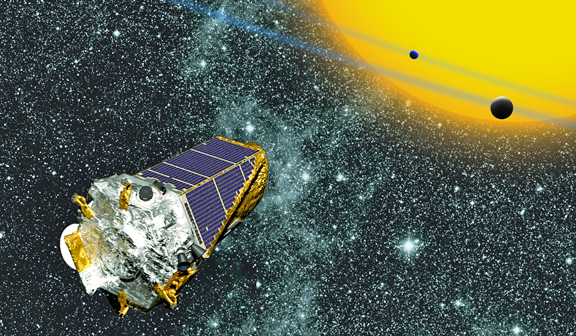Charlie Sobeck, the Kepler and K2 mission manager at NASA's Ames Research Center, has posted that the Kepler spacecraft went into emergency mode (EM) last Thursday, April 7 as a spacecraft emergency.
This enables NASA's operations engineers priority access to the Deep Space Network's ground based communications, as the priority is to have Kepler recover from the EM, which is fuel intensive and enables only the lowest of operational modes for the spacecraft. However, the speed of the communications is quite slow as Kepler has almost reached 72 million miles in distance from the Earth. For signals to traverse this vast distance, 13 minutes are needed for the completion of communications.

Kepler and K2 image, courtesy of NASA.
The challenges for Kepler arose prior to a maneuver that would point the spacecraft toward the Milky Way's center when a microlensing observing assignment was scheduled to start. Until that time, all was proceeding normally for Kepler. This mission was specifically designed to survey a portion of our area of the Milky Way galaxy to locate Earth-size planets in, or near, the habitable zone. Kepler was then to determine how many of the discovered stars—which number in the billions—could actually have such potentially habitable planets.
Nearly 5,000 exoplanets, of which more than 1,000 have actually been confirmed, were detected by Kepler by the close of the spacecraft's prime mission in 2012. Then, in 2014, a new, extended mission named K2 was started wherein the search would be continued for exoplanets as well as for young stars, supernovae and other astronomical entities.


